Idea by
Dimitra Chatziandreou, Gian Luca Petroselli, Giuseppe Vultaggio
GVultaggio Creative Office
Call for ideas 2018
Temp
Temp
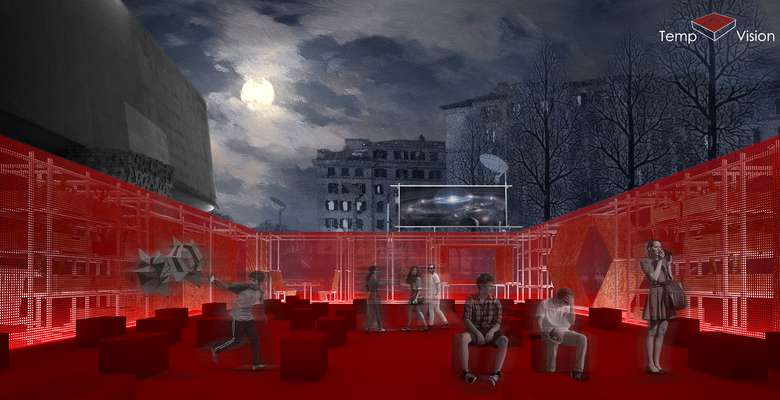
Temp is an emergency pavilion, designed to meet the needs of a population after a natural disaster. Usually, when it comes to emergency situations, designers tend to focus on providing temporary housing solutions, neglecting the fact that a space which is able to host communal activities can actually contribute to the reconstruction of the social fabric. That kind of spaces enable people to meet, talk, play and carry out activities that will utterly contribute to sheltering one’s identity, thus to social cohesion. The pavilion consists of a three-dimensional framework of metal tubes (scaffold tubes) that forms an enclosing square, intended to host public events. The peripheral structure (0.90m wide) incorporates a variety of wooden modules of different functions: First aid, changing rooms–storage, education, meditation, playground and living. In-between these modules, there are removable elements, anchored to the framework, hosting secondary functions: Relaxation, gardening and memory.
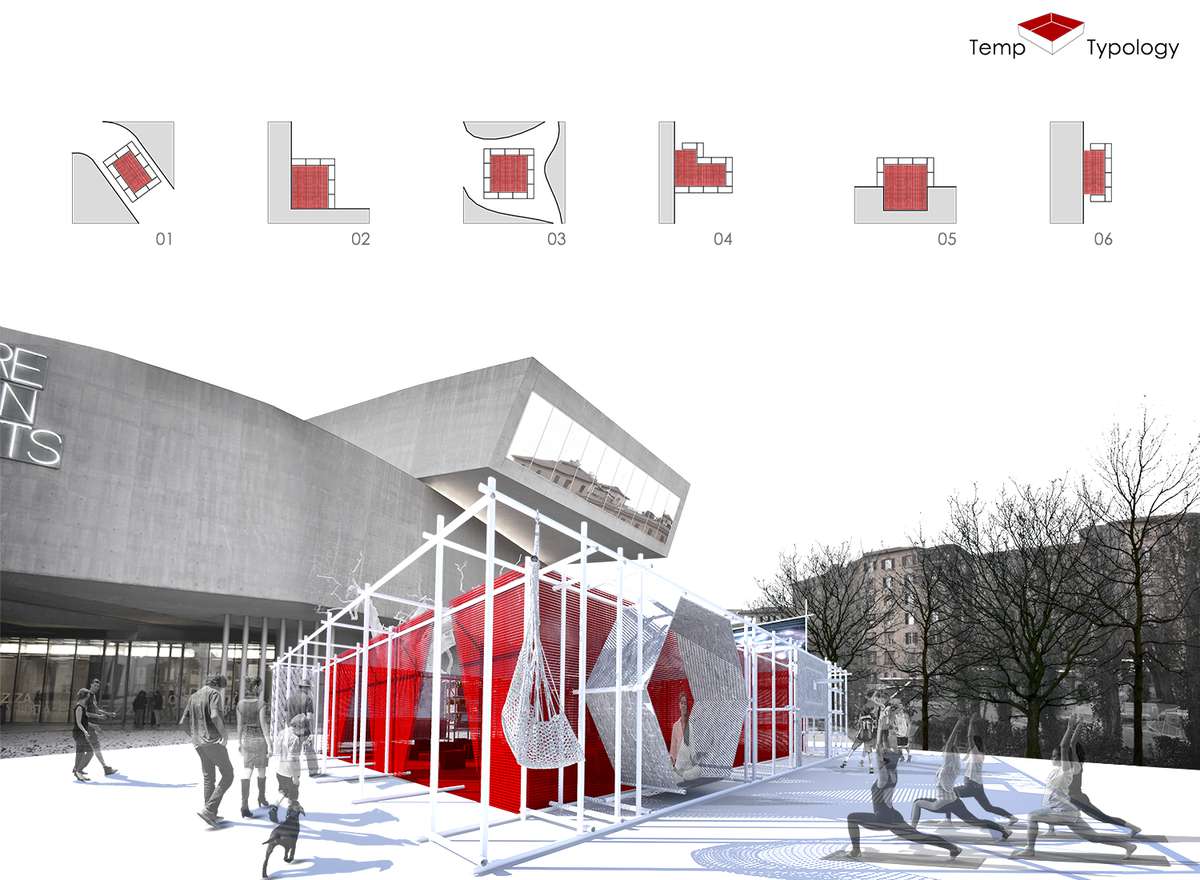
The most important attribute of Temp is flexibility. Its modular structure allows it to be arranged in several ways, adapting in any public space. Every module has its own function (a primary or a secondary one) and can be combined with any of the others. Diagrams 01 to 06 present variations of Temp’s possible arrangement in a public space, along with a visualization of the pavilion’s south-east corner, including the entrance alongside the meditation and playground modules.
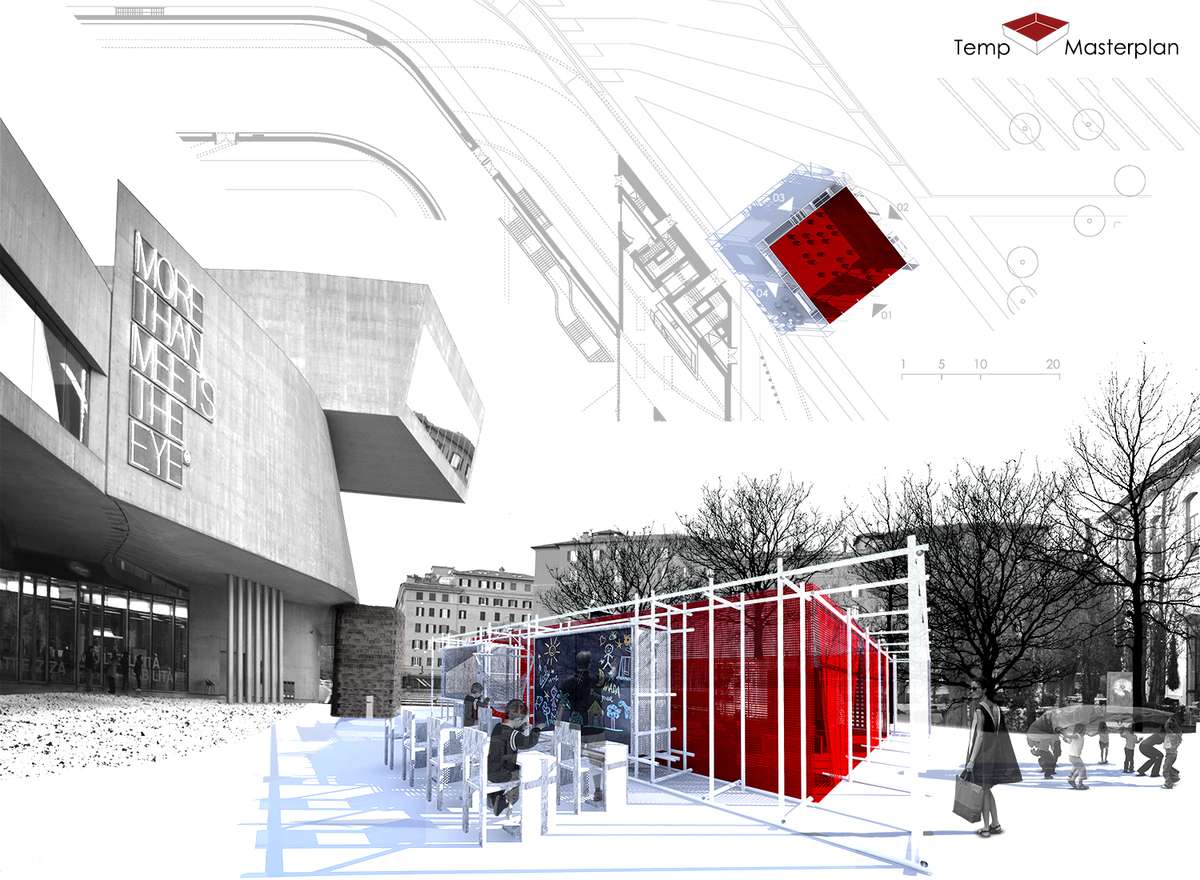
The proper arrangement of the pavilion for the museum’s recreational area is that of a closed rectangular. This way, it is accessible through all directions and the square it forms in its interior is right in the center of the open space. The pavilion is located in the square next to the museum’s entrance, following its orientation. The visualization depicts the west side of the pavilion, which consists of two primary modules (first aid and education) and one secondary (relaxing).
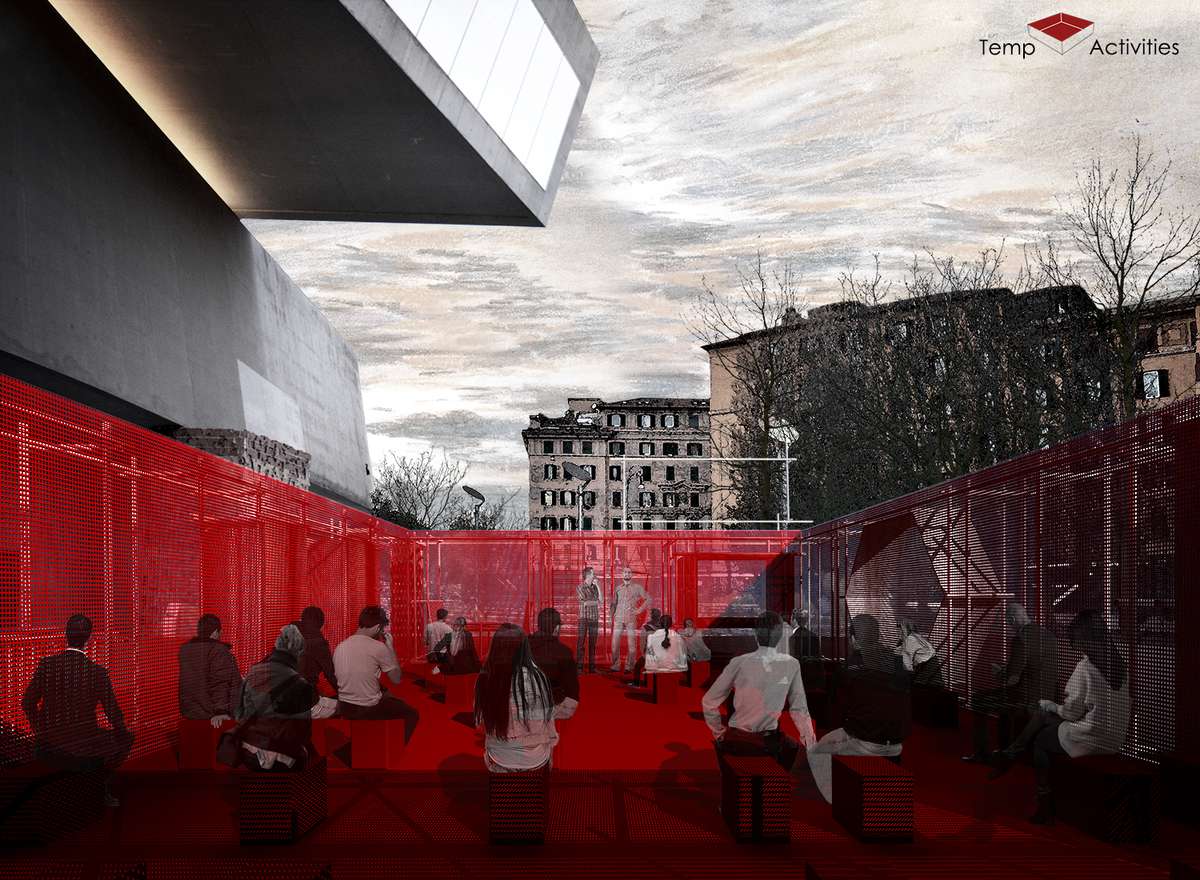
Apart from the modules that constitute the pavilion’s framework, an important part of its function is the inner square. It is a thematic space that can host several communal activities throughout the day and night. It is suitable for a lecture, a seminar, a performance, a concert, etc.
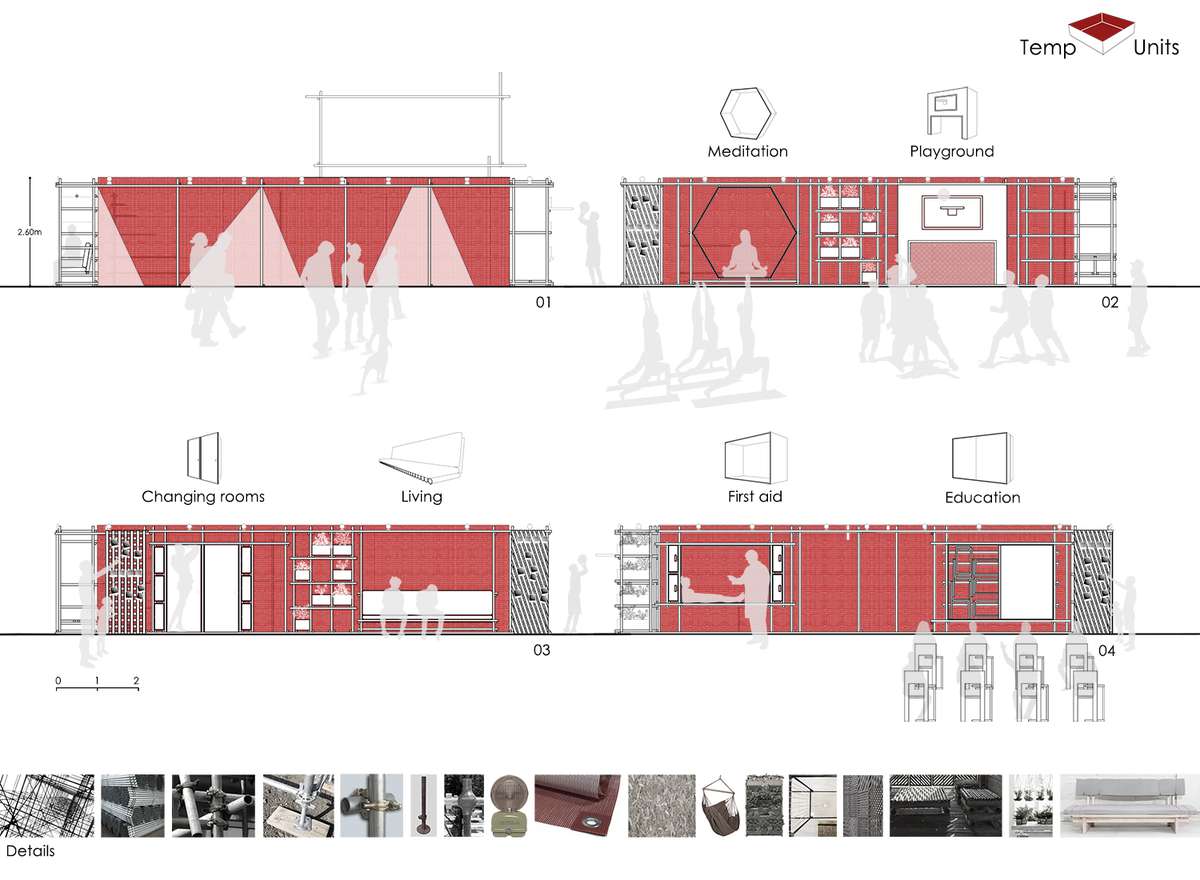
Every primary module is more or less 3 meters long, while every secondary one only half of it. Temp, being an emergency pavilion, is cheap and easy to construct. Its main framework consists of scaffold tubes for construction sites and OSB wood. The connections, lights and inner net are also construction site materials, while all the materials used, are cheap and recyclable.
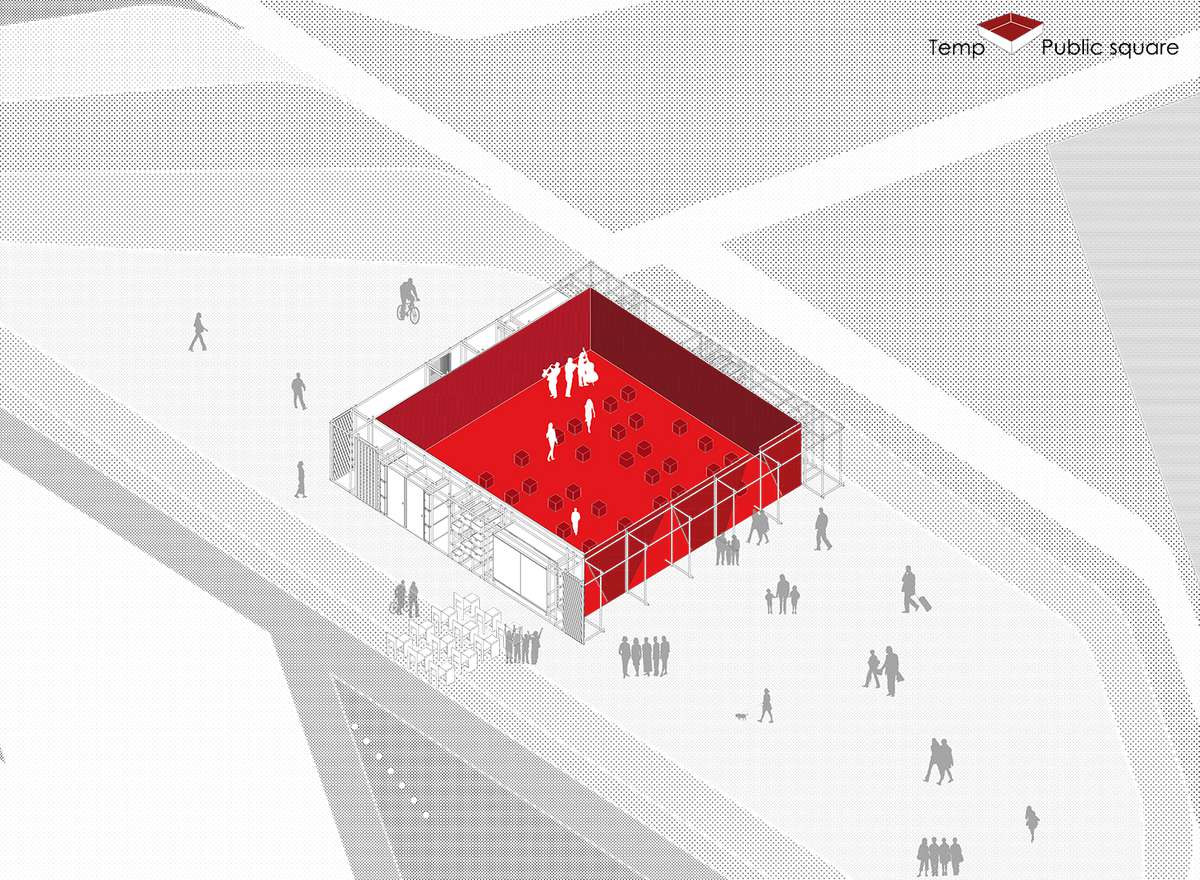
Axonometric view of the pavilion, highlighting the inner thematic square.
Temp
Temp

Temp is an emergency pavilion, designed to meet the needs of a population after a natural disaster. Usually, when it comes to emergency situations, designers tend to focus on providing temporary housing solutions, neglecting the fact that a space which is able to host communal activities can actually contribute to the reconstruction of the social fabric. That kind of spaces enable people to meet, talk, play and carry out activities that will utterly contribute to sheltering one’s identity, thus to social cohesion. The pavilion consists of a three-dimensional framework of metal tubes (scaffold tubes) that forms an enclosing square, intended to host public events. The peripheral structure (0.90m wide) incorporates a variety of wooden modules of different functions: First aid, changing rooms–storage, education, meditation, playground and living. In-between these modules, there are removable elements, anchored to the framework, hosting secondary functions: Relaxation, gardening and memory.
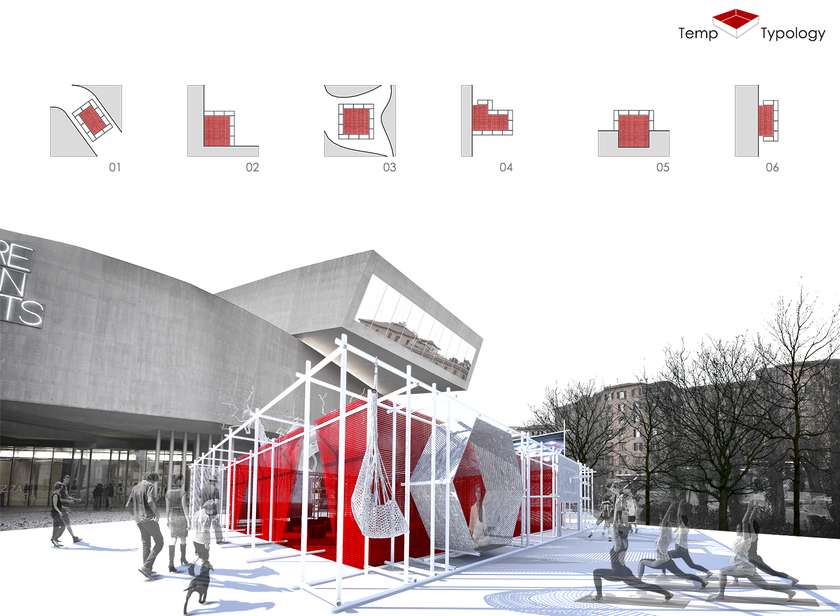
The most important attribute of Temp is flexibility. Its modular structure allows it to be arranged in several ways, adapting in any public space. Every module has its own function (a primary or a secondary one) and can be combined with any of the others. Diagrams 01 to 06 present variations of Temp’s possible arrangement in a public space, along with a visualization of the pavilion’s south-east corner, including the entrance alongside the meditation and playground modules.
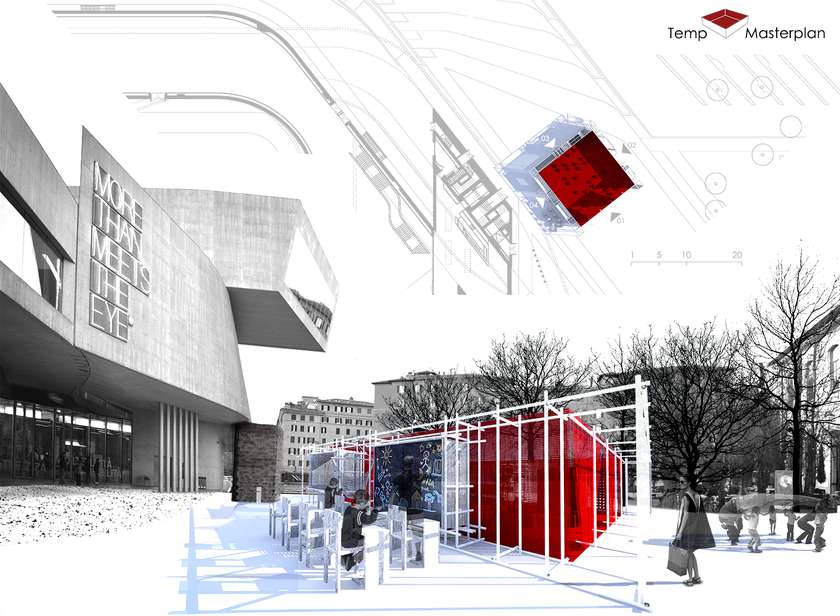
The proper arrangement of the pavilion for the museum’s recreational area is that of a closed rectangular. This way, it is accessible through all directions and the square it forms in its interior is right in the center of the open space. The pavilion is located in the square next to the museum’s entrance, following its orientation. The visualization depicts the west side of the pavilion, which consists of two primary modules (first aid and education) and one secondary (relaxing).

Apart from the modules that constitute the pavilion’s framework, an important part of its function is the inner square. It is a thematic space that can host several communal activities throughout the day and night. It is suitable for a lecture, a seminar, a performance, a concert, etc.
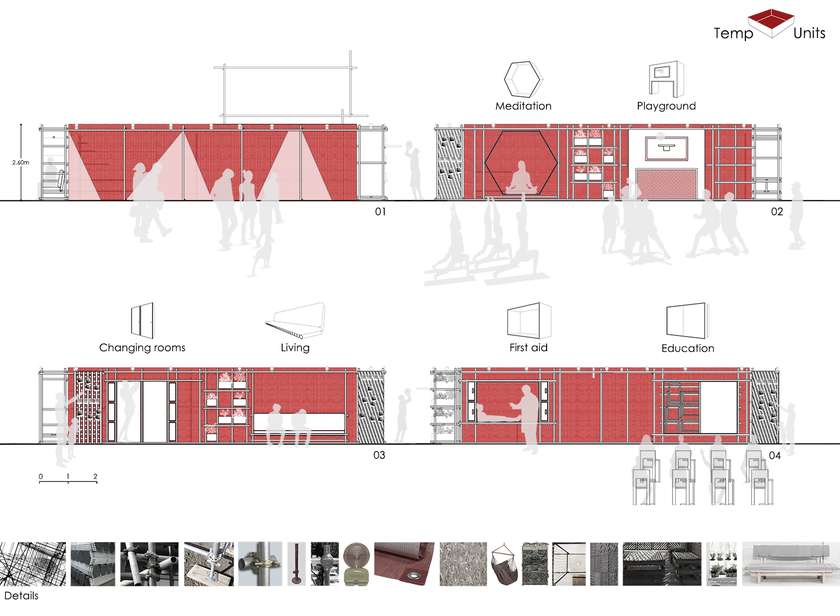
Every primary module is more or less 3 meters long, while every secondary one only half of it. Temp, being an emergency pavilion, is cheap and easy to construct. Its main framework consists of scaffold tubes for construction sites and OSB wood. The connections, lights and inner net are also construction site materials, while all the materials used, are cheap and recyclable.
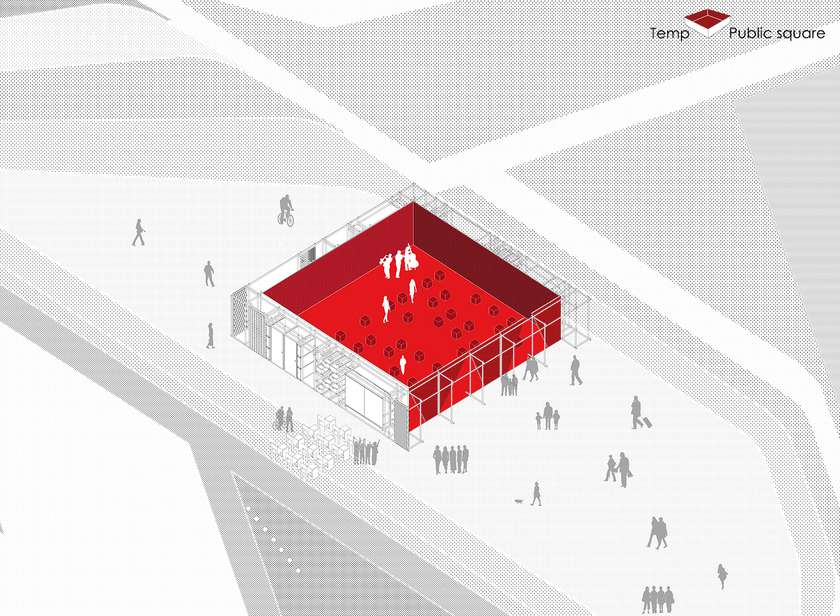
Axonometric view of the pavilion, highlighting the inner thematic square.